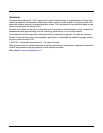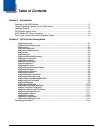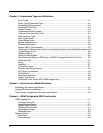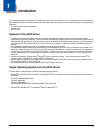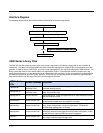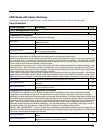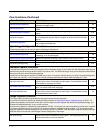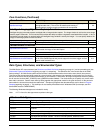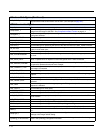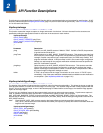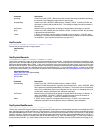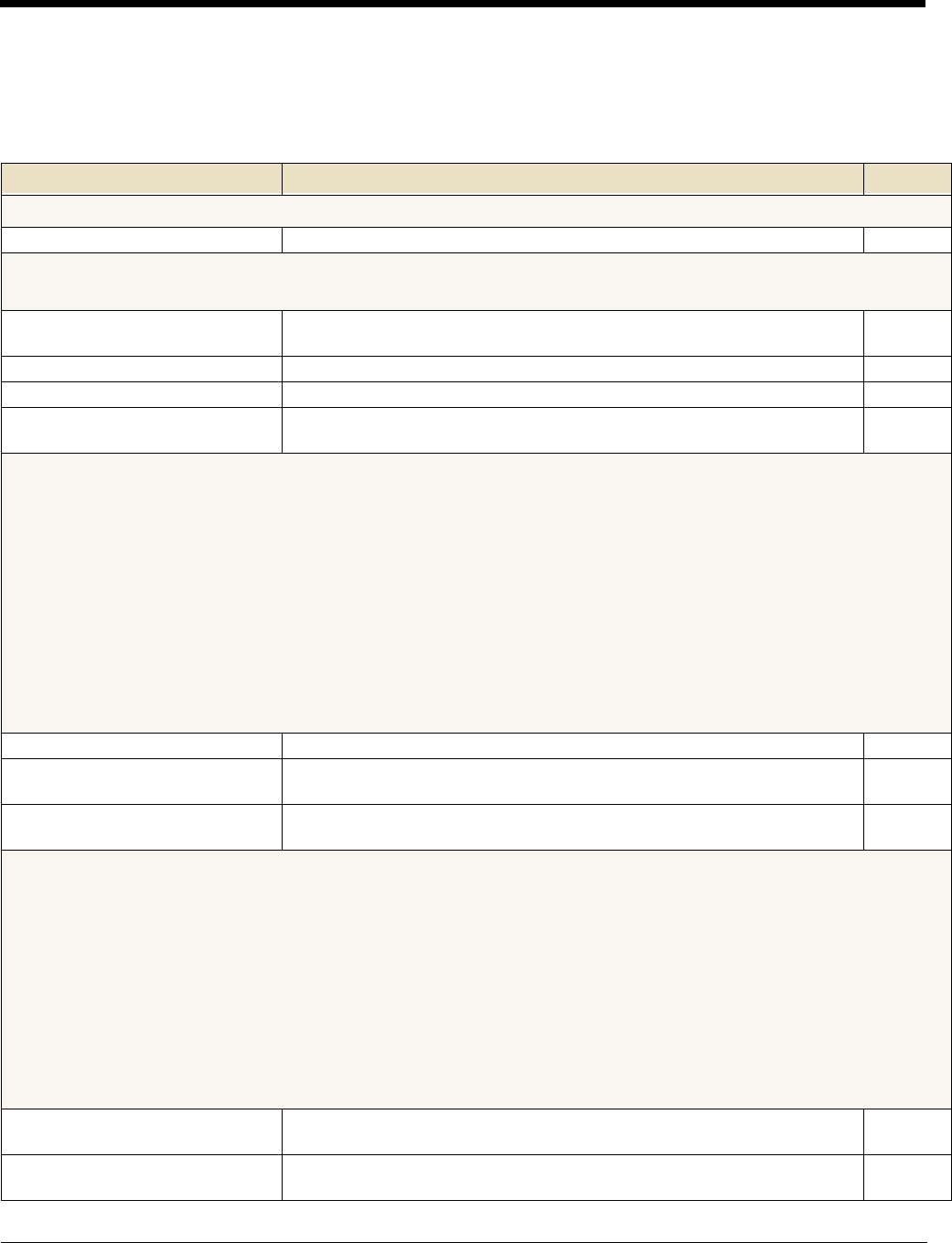
1 - 3
5X00 Series API Library Summary
The following is a summary of the API functions. The full description of each function is found on the page noted.
Core Functions
Core Function Summary
Page
Error Management Function
hhpGetErrorMessage Returns a descriptive text string for the specified SDK error code. 2-4
Connection Functions
These functions open, close, and verify a connection to an imager.
hhpConnect
Establishes and initializes a connection to the imager at the specified port and
connection settings.
2-3
hhpDisconnect Closes down the open imager connection. 2-3
hhpEngineConnected Checks if the connection to the imager is valid. 2-4
hhpNamedConnect
Establishes and initializes a connection to the imager at the specified driver
name and connection settings.
2-5
Asynchronous Notification and Control Functions
Image and barcode capture can be either blocking (synchronous) or non-blocking (asynchronous).
In blocking (synchronous) mode, the SDK function call does not return until the barcode or image is received, the request times
out, or an error occurs. In non-blocking (asynchronous) mode, the capture call returns immediately. Your application is notified
of the completion when either a barcode or an image was received, the time-out for the call was reached, or an error was detected.
You can specify which notification methods you wish to receive.
Your application can subscribe to one or more of the following notification methods: Windows Event, Windows Message, and/or
Callback Function. When notification is received, your application can call hhpGetAsyncResult (see page 2-4) to retrieve the
return code as well as the image, barcode, or text data. The asynchronous interface is also the manor in which imager-initiated
barcode capture data, such as from a hardware trigger, is returned.
There is also a cancel function (see hhpCancelIo on page 2-2) that allows you to cancel any ongoing operation. You should be
aware that when the callback function method is used, any processing done during the callback is run within the context of the
SDK’s asynchronous read thread. This means that the SDK is unable to receive images or barcodes until the callback returns.
hhpCancelIo Cancels any synchronous or asynchronous I/O in process. 1-3
hhpGetAsyncResult
Retrieves the results (image/barcode, etc.) of an asynchronous
I/O event.
2-4
hhpSetAsyncMethods
Allows the application to select how it wishes to be notified on completion of
an asynchronous I/O event.
2-10
Imaging and General Configuration Functions
The imaging and configuration functions provide a simplified API for modifying the imager setup, image/barcode capture
configuration, and symbology configuration. In order to limit the number of functions a developer must master, the design
philosophy is to allow configuration control using only a small number of setup functions. The imager configuration is broken down
into functional groups with structures containing the configurable items for each. Individual configuration items are specified within
structures by use of a bit field mask. In this way, single configuration items can be read or written using minimal communication
traffic. There are functions for reading and writing parts or all of the HHP_CONFIG imager configuration structure as well as
writing the setup/configuration for individual symbologies. If the specified symbology is not available in the imager’s version of
the symbol decoder, (e.g., Data Matrix in a linear and PDF417 decoder), the symbology functions return
RESULT_ERR_UNSUPPORTED. Finally, to facilitate easy configuration management from device to device and application to
application, the 5X00 Series also provides methods for retrieving and setting the whole imager configuration as a single stream
so it can be saved to disk and restored at a later time.
hhpReadConfigItem
Retrieves a single configuration group or whole imager configuration from the
imager.
2-6
hhpReadConfigStream
Retrieves the current whole imager configuration as a single buffer. This
buffer can be saved to a file and later restored.
2-7




